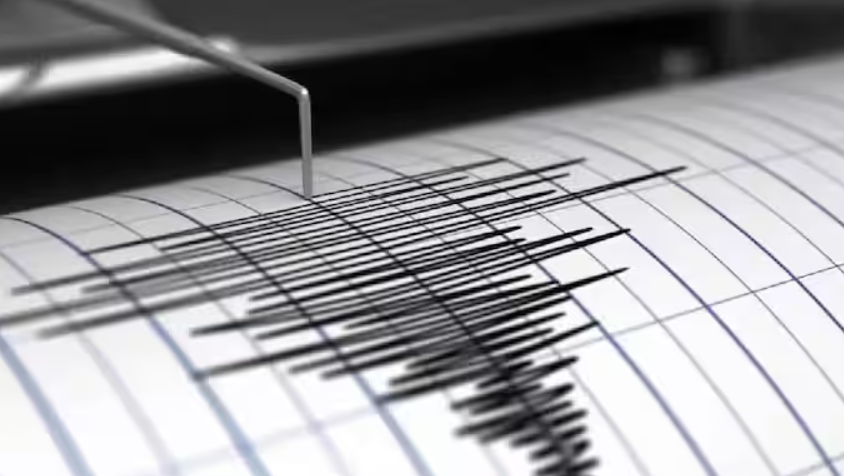6.9 Magnitude Quake Hits Southwest Japan, Triggers Tsunami Advisory
6.9 Magnitude Quake Hits Southwest Japan, Triggers Tsunami Advisory
Japan, situated on the Pacific Ring of Fire, is one of the most seismically active regions in the world. The Ring of Fire is a geologically volatile arc of volcanoes and fault lines encircling the Pacific Basin, where several tectonic plates meet and interact. This unique geographical setting exposes Japan to frequent earthquakes and tsunamis, necessitating stringent preparedness measures and robust response systems.
On Monday, a powerful earthquake with a magnitude of 6.9 struck the Kyushu region in southwestern Japan. According to the Japan Meteorological Agency (JMA), the earthquake originated off the coast of Miyazaki Prefecture in the Hyuga-Nada Sea. The tremor was intense, registering a level 5 on Japan’s seismic intensity scale, which gauges the severity of ground shaking. Following the earthquake, the JMA issued a tsunami advisory, warning of possible waves up to one meter (three feet) high along the coastal areas of Miyazaki and Kochi prefectures.
While the U.S. Geological Survey initially recorded the earthquake at 6.9, it later revised the magnitude and confirmed that no significant tsunami threat existed. Despite this, the JMA urged residents to remain cautious and avoid coastal waters, emphasizing that tsunamis could occur in multiple waves. Officials also confirmed that no irregularities were detected at the Ikata nuclear power plant, and as of now, no significant damage or casualties have been reported.
This recent earthquake is a reminder of similar seismic events in August of the previous year when two strong quakes—measuring 6.9 and 7.1—rattled Kyushu and Shikoku islands. Tsunami warnings were issued during those events as well, though they thankfully did not result in substantial damage or loss of life.
Japan’s past history of earthquakes and tsunamis
Japan’s history is punctuated with devastating earthquakes and tsunamis. One of the earliest recorded tsunamis occurred in 684 AD following a powerful earthquake in the Nankaido region. Centuries later, in 1707, the Hoei earthquake—estimated at a magnitude of 8.6—triggered a massive tsunami that wreaked havoc along the Tokaido and Nankaido coastal regions. This earthquake also set off Mount Fuji’s last eruption just weeks later, showcasing how closely linked various geological phenomena can be in this region.
The 20th century saw some of Japan’s most catastrophic seismic disasters. The 1923 Great Kanto Earthquake, which struck the Tokyo and Yokohama areas, had a magnitude of 7.9 and caused widespread destruction, fires, and over 140,000 fatalities. Decades later, in 1995, the Kobe Earthquake (magnitude 6.9) highlighted vulnerabilities in urban infrastructure, claiming more than 6,400 lives and causing extensive property damage.
Among the most devastating events in modern history was the 2011 Tohoku Earthquake and Tsunami. At a magnitude of 9.0, it remains the strongest earthquake ever recorded in Japan. The resulting tsunami reached heights of up to 40 meters, sweeping away entire communities and claiming nearly 20,000 lives. The disaster also led to the Fukushima nuclear crisis, prompting international discussions on nuclear safety and disaster preparedness.
In response to its vulnerability, Japan has developed advanced technologies and protocols to mitigate earthquake and tsunami impacts. Early warning systems, strict building codes, and regular drills have significantly improved the nation’s preparedness. However, the unpredictable nature of seismic activity, coupled with Japan’s location, ensures that such events remain a constant challenge.
Credit – Oneindia news
The recent 6.9-magnitude earthquake is a stark reminder of the importance of vigilance in the face of natural disasters. While technological advancements have enhanced resilience, the human toll and unpredictability of these events underscore the need for continuous innovation and community preparedness. For Japan, balancing its rich history with ongoing challenges remains a testament to its resilience and adaptability.
Also Read-
IPL 2025 – Official Start Date, Complete Team Rosters, Final Match Details, and Key Updates
